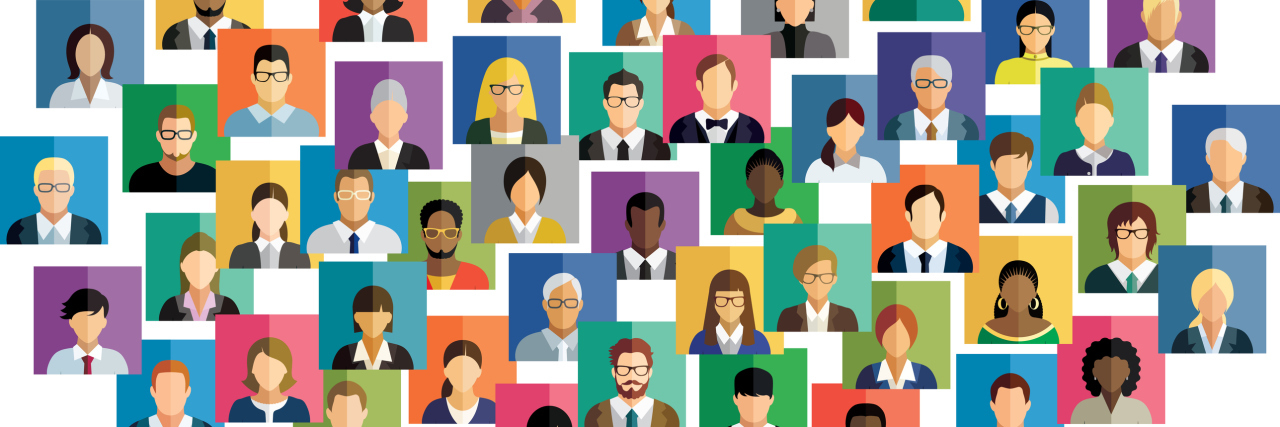What Life is Like With ‘Polyfragmented’ Dissociative Identity Disorder
Dissociative identity disorder (DID) is a mental illness that is primarily seen in victims of childhood trauma and/or repetitive abuse. It’s a complex disorder that makes life challenging, but once you learn about it and learn how to manage it and live with it, it can aid your life in many ways instead of it being the debilitating disorder that’s frowned upon in the media.
I’ve been diagnosed since I was 21, but DID has an onset during childhood so a large number of people with DID live with it their entire lives, going undiagnosed or receiving incorrect diagnoses because it’s still known as rare and many professionals aren’t quite sure what to look out for. It’s a disorder that’s characterized by having two or more distinct identities, also known as alters, part or personality states, each with their own way of thinking and relating. Time loss. Identity disturbances. Switching. Dissociation. Amnesia.
Each day I wake up, and I have no sense of self. I have no idea who I am or what I plan on doing for the day. I make plans and they change just as quickly as I switch and a different part of me takes over. I switch rapidly throughout the day, and it’s both a blessing and a curse. If I want to do something nice for myself or for my parts, it can quickly get changed in an instant if a child part comes out, a depressed part who doesn’t want to leave the house, or a teen part who just wants to party with their friends. I have polyfragmented DID, so I share my body with 50+ parts of myself. Making decisions is a nightmare, but we’ve all learned to agree to certain things, to make choices based on what’s best for all of us as a whole, and to not sabotage the system or put the body or mind at risk any longer than what we have over the years when we weren’t communicating.
Internal communication is massive with DID. We’ve always had it there, but it’s been touch and go over the years depending on circumstances, life events, parts taking more control than others, etc. It’s exhausting, communicating all the time in different ways both internally and externally, but it’s how we best make decisions, go on about our days, choose what to eat, what to wear, what to buy, how to save money, and basically how to all live together in one body. I encourage you that if you have DID and you’re reading this, then start the process of communicating now. It’s a 24/7 job but you need to do it. The times when it’s gone quiet have been absurd and terrifying and I wouldn’t wish it upon any system. It can be loud, confusing and scary at first and it can make it hard to concentrate on doing other tasks because your head is so loud, but it’s worth a try!
Time loss is a biggie. We used to experience this one the most out of all the symptoms, and when we were diagnosed, we were lucky to already have some sort of co-consciousness going on and we’ve been building and working on that so parts can be out together or can switch without losing time — there’s still gaps depending on which part is out, but it’s not nearly as extreme than when we were younger. Time loss is huge in those with dissociative disorders but keeping diaries of where you’ve been and what you’ve done over the day help a lot with short-term memory. Our long-term memory is gone and we have a lot of memories that we can’t recall, that feel vague and distant when looking at pictures and videos and it doesn’t feel like us in them — and it’s a sad process. We do personal vlogs to keep track of our steps and that’s aided a lot in our recovery and healing. Time loss can be debilitating and terrifying as it can make everything around you feel even less real, yourself the most, and can leave you feeling scared and vulnerable but just remind yourself that there are ways to help it and it’s not going to last forever. (See our other article on time loss with dissociative identity disorder for more on that!)
We all have different interests, hobbies, friends, likes and dislikes. This can make things interesting but also hard. If we plan on going out with a friend and we switch, we can be out with that friend and just go home from there because that part no longer feels comfortable with them — it’s not their friend. We have different interests and likes and hobbies, which can make things fun and interesting, but also draining at the same time because we only have one body and can’t do all that we wish we could in one day. Parts fight over what to do with our day, which can be loud and exhausting. We have different likes and dislikes with food and that makes it hard to eat. Picking meals can be quite hard work, but it can be exciting to try new foods that I’ve never had before!
Living with DID is hard, but it does get easier. You have the power to take your life back and gain control over all that you’ve missed out on during your childhood. You can fight and get your sense of self back, and work on living a wholesome life with you and your system.
For those without DID, thank you for reading this. I hope this is able to spread even the smallest bit of awareness about dissociative identity disorder to the community.
Getty Images photo via Aelitta

